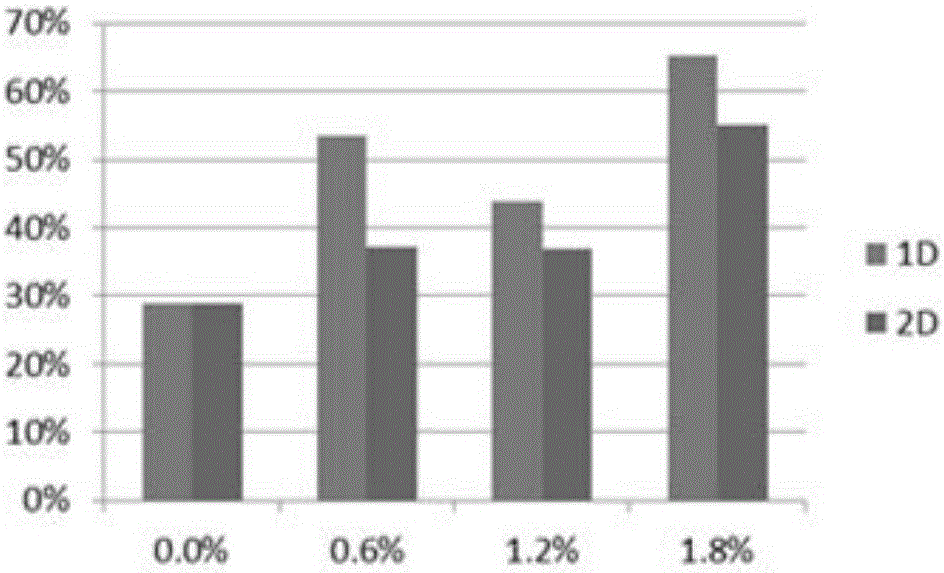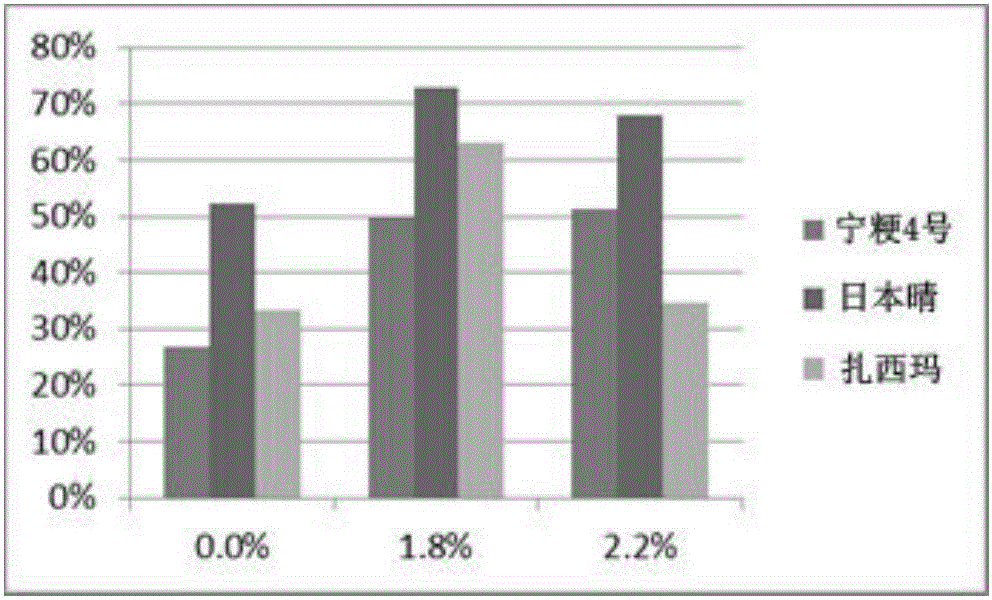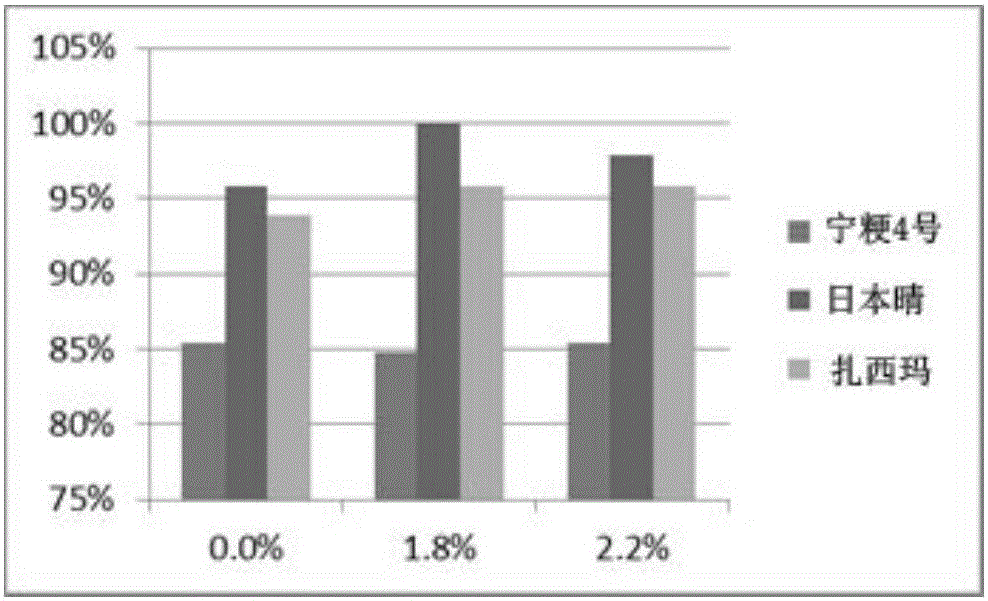Method for improving salt tolerance of paddy rice at seedling stage
A technology of salt tolerance and rice seedlings, applied in the field of rice salt tolerance, can solve the problems of few varieties, poor quality, poor disease resistance and rice blast resistance, and save manpower and material resources, and save breeding time Effect
- Summary
- Abstract
- Description
- Claims
- Application Information
AI Technical Summary
Problems solved by technology
Method used
Image
Examples
Embodiment Construction
[0023] 1) Determination of salt treatment time and concentration: the test selects a moderately salt-tolerant variety Nanjing 46 (approval number Su Shendao 200814), and first uses a salt solution of 0% NaCl, 0.6% NaCl, 1.2% NaCl, and 1.8% NaCl Treat for 1 day and 2 days respectively. After the treatment, continue to soak the seeds with fresh water until they become white. Move the lubai seeds to a 96-well sharpened PCR plate, 48 seeds / variety, repeat twice, and place the PCR plate in a cuboid tank filled with water. When the seedlings grow to 1 leaf and 1 heart, replace the water in the tank with hydroponic nutrient solution. When the seedlings grow to 2 leaves and 1 heart, replace the nutrient solution in the tank with rice nutrient solution containing 0.5% NaCl, and carry out salt stress treatment, and replace the nutrient solution containing salt every 3 days, and the salt treatment time is 21 days , after the treatment, placed in the nutrient solution and rehydrated for ...
PUM
 Login to View More
Login to View More Abstract
Description
Claims
Application Information
 Login to View More
Login to View More - R&D
- Intellectual Property
- Life Sciences
- Materials
- Tech Scout
- Unparalleled Data Quality
- Higher Quality Content
- 60% Fewer Hallucinations
Browse by: Latest US Patents, China's latest patents, Technical Efficacy Thesaurus, Application Domain, Technology Topic, Popular Technical Reports.
© 2025 PatSnap. All rights reserved.Legal|Privacy policy|Modern Slavery Act Transparency Statement|Sitemap|About US| Contact US: help@patsnap.com



